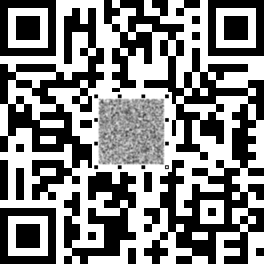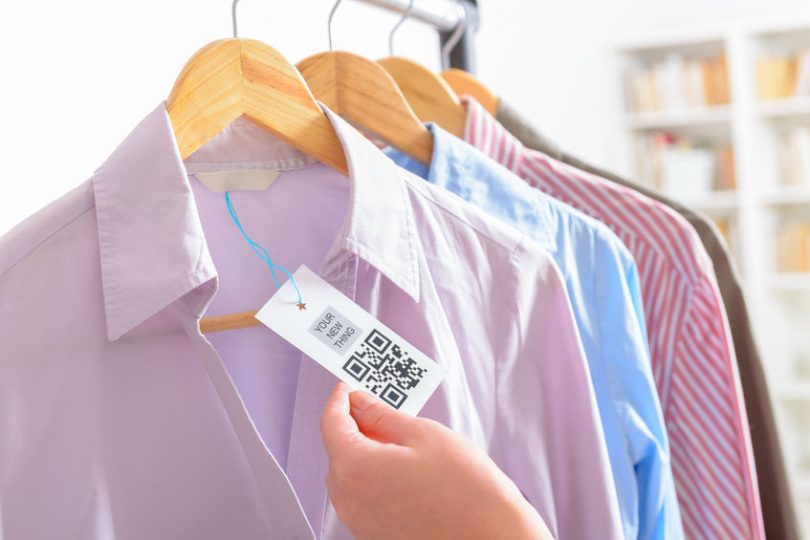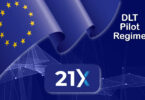While other startups rush to reposition themselves as blockchain pure-plays, track-and-trace company ScanTrust is the opposite. For some, blockchain is the heart of a solution. But not for ScanTrust. The startup sees blockchain as augmenting and enhancing traceability, transparency, and trust, but not the core. Currently, blockchain accounts for less than ten percent of their revenues.
The company provides a copy-proof QR code solution which is used for supply chain track and trace and consumer engagement. Having launched in 2014, late last year the startup raised a $4.2 million Series A round led by Credit Suisse and including Innogy Ventures. The Swiss-based startup currently has a team of 35 people in six offices spread around the globe.
Many of its clients are major Western companies – like Unilever, Dow Chemicals, and ABInBev – looking to protect their brands in China. But these big companies don’t want to have different systems around the world, so there’s the potential to leverage the ScanTrust solution globally.
ScanTrust’s origin story
Nathan Anderson, ScanTrust CEO, tells the story of how he grew up in a small rural American town with a population of 3,000. A lot of fresh produce was bought or bartered from people his family knew. Hence there were never any issues of authenticity or knowing from where the produce came. After college, Anderson traveled the world. In 2005 he arrived in China at the height of the boom and decided to stay.
Anderson said: “When you live in China – it doesn’t matter if you’re rich, poor, or somewhere in the middle from a socio-economic point of view – on a daily basis you come across decisions about what you’re buying. And you don’t know exactly what you’re buying. Sometimes it’s as fundamental as ‘Is this real or is this fake?'”
In 2011 Anderson met Co-founder and CTO Dr. Justin Picard at a World Economic Forum event in Jakarta. At the time Picard was working as chief scientist for an anti-counterfeit company, and his thirty-odd inventions were used on billions of products. Because of his personal experience in China, Anderson was intrigued.
There are sophisticated ways of marking products to prove they’re originals, like DNA tagging or requiring a special camera. The idea of an inexpensive method that just used a mobile phone was appealing. As a result, Picard invented what ScanTrust refers to as the world’s first copy-proof QR code.
What makes a QR code copy-proof?
Given the hype around blockchain, it’s easy to imagine this copy-proof QR code involves merely verifying it on a blockchain. But there’s patented technology behind it unrelated to blockchain.
The first step is to give a product a unique identifier. Step two is to scan it and check it on a phone or website. Except that a copy will get the same response as the original.
So step three is to add some big data that tracks details about the barcode scans and can flag discrepancies. This also requires a high level of interaction by consumers. Now you know there’s a counterfeit issue, but you don’t know which product is the original one.
 And that’s where the secret sauce comes in. In some customized QR codes you can add a logo or image in the middle of the barcode to make it look pretty. ScanTrust does something similar by adding a secure graphic in the middle of the barcode, a graphic which is purposely designed to take advantage of natural degradations that occur in the printing process and lose a lot of information during each print.
And that’s where the secret sauce comes in. In some customized QR codes you can add a logo or image in the middle of the barcode to make it look pretty. ScanTrust does something similar by adding a secure graphic in the middle of the barcode, a graphic which is purposely designed to take advantage of natural degradations that occur in the printing process and lose a lot of information during each print.
So if someone makes a copy of an existing label and then prints it again, the quality will be lower. And that’s how it’s possible to detect which QR code is original and which one is a fraud.
Hence the final step is to compare the scan of the QR code to the original, and ScanTrust calculates the degradation of the image at the center. If the quality is too low, then it’s a copy of the original code.
A generic QR code reader can read the ScanTrust QR code in the usual way but can’t do the extra security authentication. So users tend to get directed to use the ScanTrust app or a brand’s app.
The QR code isn’t just for security
When a consumer sees a QR code on a product, they won’t necessarily assume it’s to prove authenticity. Hence ScanTrust offers a complete solution for QR codes, what Anderson refers to as its three pillars.
On top of brand protection or anti-counterfeiting, the QR code is used as a customer engagement tool. That can range from general marketing or loyalty programs or as a transparency tool providing full provenance of the article.
Additionally, the QR codes form part of ScanTrust’s supply chain track and trace solution, which is a centralized solution and not blockchain based. So ScanTrust’s clients can pick and choose the applications.
Less than two years ago the company started working on its blockchain solution which it now considers is the fourth pillar.
Blockchain case study: Cambio Coffee
Cambio Coffee is a premium Chinese coffee brand which is ethically and sustainably sourced. The company has a social enterprise mission and wants to raise awareness of their sourcing practices and also demonstrate it.
“Our goal is to connect the consumer to the origin story,” says Sebastian Martin, CEO of Cambio Coffee. “So far we have been doing it through our marketing material. Now blockchain technology gives us a way to validate our claims.”
Cambio buys its coffee beans from South West China and Peru. So when the coffee beans are harvested and passed to the shipper, that action is logged on a blockchain. The tracking also covers the roasting and packaging process all the way to the store. When a customer scans a barcode, they not only authenticate that the product is real, but they also get the transparency data about the ingredients.
The data doesn’t come from Cambio or ScanTrust it comes from a Hyperledger Sawtooth blockchain. So far several hundreds of thousands of packages are on the blockchain.
Why Hyperledger Sawtooth
Given the production version of Hyperledger Sawtooth only launched in January, it’s less mature than Hyperledger Fabric. But for ScanTrust, they liked the fact that Sawtooth was IoT driven and designed for scale. This was a critical consideration give most of ScanTrust’s projects have many millions of identifiers.
Because of the infancy of Hyperledger Sawtooth at that time, it took their developers a little while to get going and get their virtual machines set up. However, once they got past that, the developers were happy working with Sawtooth and ScanTrust plans to use it on other projects moving forward.
“We were impressed by how fast the infrastructure is,” said Tobias Kars, VP Product Management at ScanTrust. “It is really lightning fast.”
Intel contributed the original Sawtooth code to Hyperledger.
ScanTrust is also working with open source protocol BigChainDB.
Public blockchain plans: theGoodChain
Along with BigChainDB, ScanTrust is initiating a new public blockchain project, the GoodChain that includes an Ethereum-based token. Anderson describes it as “an open source decentralized product transparency platform for social impact.” By using a public blockchain, the intention is to provide greater trust.
Anderson explained the rationale: “What we’ve seen from a lot of projects that we’ve done, even though they’ve been successful, is that if there was more incentive across certain participants in a network, that it would create greater value for everyone and be a much stronger solution.”
In other words, brands want more consumers to scan the QR codes so they can collect data. At the same time these companies are keen to donate to worthy causes in a transparent way. GoodChain aims to address both of these needs.
Conclusion
There are two useful takeaways from ScanTrust which are relevant to many enterprises. Firstly, once you add a barcode to a product for anti-counterfeiting or track-and-trace, you might as well use it for customer engagement as well. And vice versa.
Secondly, for anti-counterfeit and customer engagement, you need customers to interact with the barcode to reap the full benefits. And that may need some incentives to do so, with tokens being a logical route.







